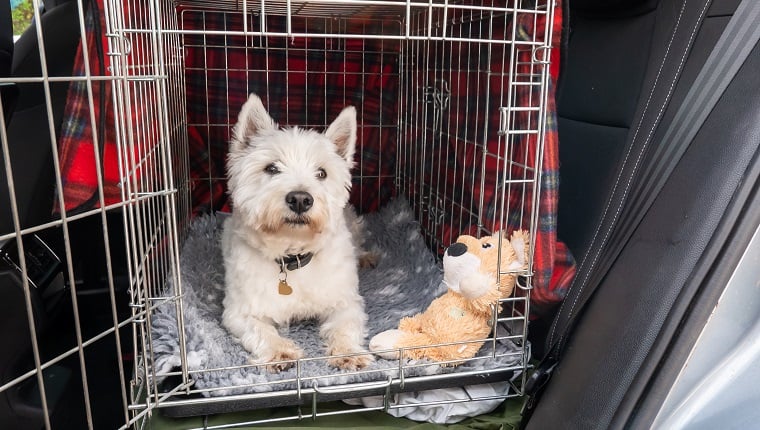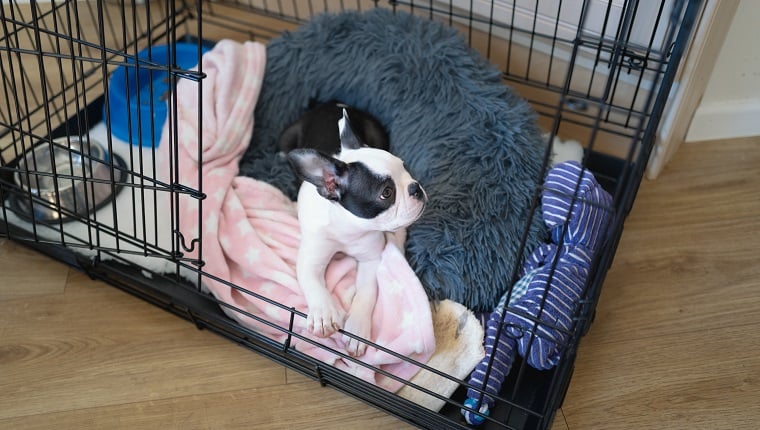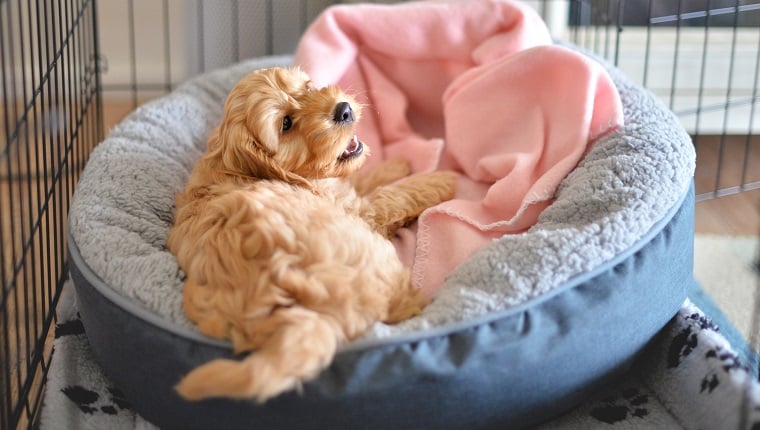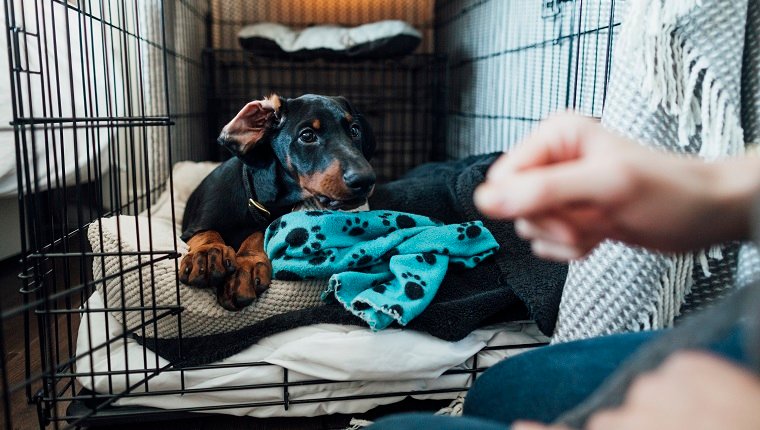New pet parents often have a lot of questions when it comes to training their dogs. This is important for many reasons. Crates can keep your dog safe while you’re away, reduce disruptive behavior, and help with home training, among other things.
Some people worry that crate confinement is brutal. However, if you do it right, your dog won’t see it that way at all. Their crates can be a cozy nest where they can retreat from the family mess or just relax. It’s like their own private bedroom.
Once they are home trained, your dog will have its own house and a nice kennel. Just remember to leave the door open for them.
How can crate training help?
Crates provide particularly good tools for two important training tasks: home training and reducing boredom and separation anxiety.
Crates make home training easier. Because dogs don’t like to pee or poop where they sleep and eat, they may be more motivated to hold it when they are in a cage.
Whenever you are not with them, put your dog in their cage and they will not have any accidents around the house. This prevents the formation of bad habits.
Take them out to the toilet regularly and they are more likely to be eliminated outdoors. This helps them learn a good habit.
Crates also help prevent boredom and separation anxiety.
If you keep toys in their crates, especially chewing toys with some snacks or peanut butter that doesn’t contain xylitol, they’ll learn two other good habits: chew toys instead of your favorite shoes when you’re not around.
How to choose a crate

If your dog’s cage is too large, they may feel like they can eliminate at one end and still keep the living area clean. If it’s too small, they will feel cramped.
The ideal crate size is enough for your dog to stand up, turn around, and lie down comfortably. It should be long enough so that their nose and rear end don’t touch each end of the crate.
If you have a puppy but don’t want to buy a new crate when they grow up, you can block part of the adult-sized crate and place them on its side. Some crates come with dividers for this purpose.
Most crates are made of foldable wire or solid plastic, each with its advantages and disadvantages.
The wire crate allows your dog to keep an eye on what is happening around you. They are good for dogs that tend to feel lonely and are often cheaper.
Sturdy plastic crates can serve a dual role in airplane or car travel, and they have a more den-like vibe that dogs prone to overstimulation may prefer. However, you can make the wire box more comfortable by covering the top and sides with blankets so that the door is not covered.
How to make crates feel like home
Lining crates with bedding makes it more comfortable, but some dogs may see bedding as toilet or chewing material. If this happens, remove the bedding temporarily. Never break newspaper in a crate – your dog would love to use it as a toilet.
Side cushions, like the ones you use for cribs, make the crate more comfortable and prevent stuck paws, tooth damage from biting metal, collar jamming, and other injuries.
Wrapping a thermos in a towel at night can soothe a new puppy and replace the warmth of sleeping with littermates.
Finally, if the crate slides on the floor, place a towel under it for added grip.
Place crates in high-traffic places – perhaps the kitchen or family room – to prevent your dog from feeling isolated and to adapt them to the noise and hustle and bustle of your home.
You can also get a portable crate to take with you as you move around the house.
How to get a puppy used to crates

If you have a puppy, it’s easy to teach them that the cage is a happy place.
It is usually just a matter of stuffing a chewing toy with snacks. Let your puppy smell it and put it in a crate. Your puppy will most likely follow.
Or put some treats outside the door, then just inside, then keep them all the way to the back of the crate, and your puppy will follow the snack path in.
Teach them to associate crates with good things, like snacks. While you’re there for supervision, let them explore the crate with the door open. Don’t use crates as punishment or your puppy may learn to be afraid of crates.
How to get adult dogs used to crates
Adult dogs that have never been crate trained require more time and effort to adjust to their new litter.
Once you bring your dog home, feed them all their food in the cage. If they don’t go in completely, put the bowl in it so they will at least stick their heads in. At the next meal, you can put the bowl a little further in the box; The next meal goes further, and so on.
Also, give your dog chewing toys and chewing bones only when they are in a cage.
Practice getting in and out of crates. Tell your dog in a cheerful tone, “Go to your crate,” and throw a treat in it. Leave the door open and let them go get snacks.
Do this a few times, and once they are happy to enter and exit, close the door for a minute or two. As long as they rest peacefully inside, praise them and offer some treats once in a while.
Gradually extend the time your dog spends in the crate with the door closed, but stay in the room. Then start to leave the room briefly and you can stretch slowly.
This process can take a few days – only slowly move on to the next step when your dog looks happy in the crate.
Important: To make your dog feel positive about spending time in the cage, never use them as punishment and give them enough time to go to the bathroom, walk, and have time to play and bond with you.
Crates are a training tool, not a place where your dog sticks to them and forgets about them; If a dog spends your entire workday in their cage and sleeps there at night, they will spend too much time in a small space.
What to do if your dog whines and cries

When dogs get used to crates, it is common for them to make some protests. Usually they just want to get out, and you should ignore them in this case – otherwise you’re teaching your dog to complain that you’ll get what they want.
Wait until your dog is quiet before letting them out, and then try again in a shorter time.
However, your dog may also need to go to the toilet. If you suspect this is the case, take them outside, but with all your heart: do not play or frolic. If they don’t eliminate in a minute or two, they’ll go back inside.
A dog that is genuinely panicking in the crate can hurt itself when trying to leave, and in this case, the cage does not serve a role in making your dog feel safe and secure.
Explore other home training methods and consider whether this dog can be reliable at home alone without needing a crate at all.
Crate training is the easiest way to get a domestic dog, and it also teaches them how to settle in and entertain themselves when you’re away. However, if you use crates to punish dogs or make them “invisible and absent-minded,” crates won’t work.
Use crates only when necessary, give your dog plenty of rest time to stretch his legs and play with you and bond with you, and make their time more enjoyable by placing toys in the crate.

